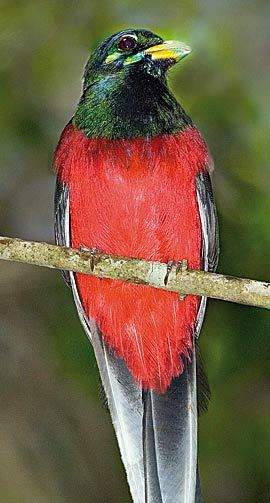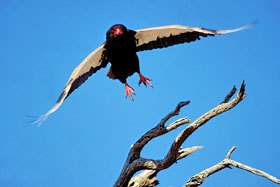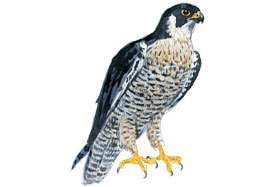
Birding Index: Facts and Resources

Considering that a Martial Eagle can take on prey heavier than 30kg, it's no surprise that isolated incidents are reported of the large African birds of prey attempting to seize children in the fields near rural homesteads.
The philosopher Julian Huxley believed that birds are, in many ways, more highly evolved than us. They symbolise freedom. We can admire and envy the way their wings lift them beyond the baggage that goes with our bigger brains.
Birds are intriguing - they keep us alive to the mysteries of the universe. How do they navigate during migration routes of thousands of kilometres?
How does the Lesser Spotted Eagle from Eurasia time its arrival in Kruger with the first summer rains? How does the Amur Falcon* know when and where to begin congregating with its fellow travellers for its return flight to Russia after the last summer rains, and how exactly does it get home - its migration route to southern Africa is well documented but nobody seems to have seen it fly back!
 The Bird of War
The Bird of War
The Bateleur is a majestic short-tailed snake-eagle seen throughout Kruger, cruising low over the tree canopy searching for carrion or live prey. It is a powerful bird in indigenous folklore and its appearance at certain times was seen as a prediction of calamity. According to Xhosa traditionalists the Bateleur, inqanga, was known as the bird of war, or the intaka yamadoda, a bird of men. Its name comes from its habit of beating its wings against its body to make a sound like the assegai being struck against a shield.
The Bateleur was viewed with great superstition by warriors, because of its custom of descending onto the battlefield to pluck the eyeballs of those who'd been killed in the fighting. It was considered especially unlucky to suffer the defilement of having a Bateleur excrete upon one. If this happened to a warrior, he was immediately removed and sent to a diviner for purification or it was feared that the entire army would face disaster (see Endangered Species, Bateleur Mythology and Snake-Eagles).
Why does a Fork-tailed Drongo attack an African Cuckoo whenever it comes too close, but is unable to resist raising that cuckoo's chick as one of its own - even when it murders its own offspring? And while we're on cuckoos - what makes the Diderick Cuckoo use the Lesser Masked-Weaver as a foster parent, while the Black Cuckoo prefers the Southern Black Flycatcher, amongst others (see Cuckoos - Nature's bad mothers)?
Another unanswered question is why White-crowned Lapwing have never been seen on the Letaba River while they are common on the nearby Olifants and on all other rivers in the north. It is no surprise that birds are so deeply embedded in the folklore of every culture in the world. In Africa we have a rich bird mythology with one of the dominant themes being their role as messengers between the worlds of the living and the dead.
For thousands of years, birds have been used by traditional healers who are guided by ancestral spirits in curing the sick or casting spells. Vulture parts in particular are in demand. They have a strong association with death and dreams, and more frivolously, vulture muthi is reputed to help the gambler pick the winning horse at the races. Conservationists are concerned that some species - like the Southern Ground-hornbill - may be pushed into extinction because of their mythical potency. Traditional healers argue that it's not in their interests to allow this to happen. Have a more in-depth look birds and muthi.
 Fastest Flyer
Fastest Flyer
The world's fastest bird is the Peregrine Falcon, which can hit speeds of over 300km an hour during its dramatic swooping dives. There is a resident population of Peregrines breeding near Lanner Gorge in northern Kruger. The best place to see the Peregrine Falcon is along Nyala Drive (S64) and in the Makuleke Reserve north of the Luvuvhu River.
Kruger's Rarest Birds | ||
Bird | Status | Where best to see them |
Dickenson's Kestrel | Rare | Makuleke and Parfuri areas |
Racket-tailed Roller | Rare | Punda and Pafuri |
White-breasted Cuckooshrike | Rare | Punda Maria |
Arnot's Chat | Uncommon | Dense mopane woodland around Punda Maria |
Meves's Starling* | Uncommon | Luvuvhu and Limpopo rivers |
Black-bellied Starling | Rare | Crocodile Bridge area |
Pink-throated Twinspot | Rare | North-eastern sandveld |
Lemon-breasted Canary | Uncommon | Luvuvhu River |
